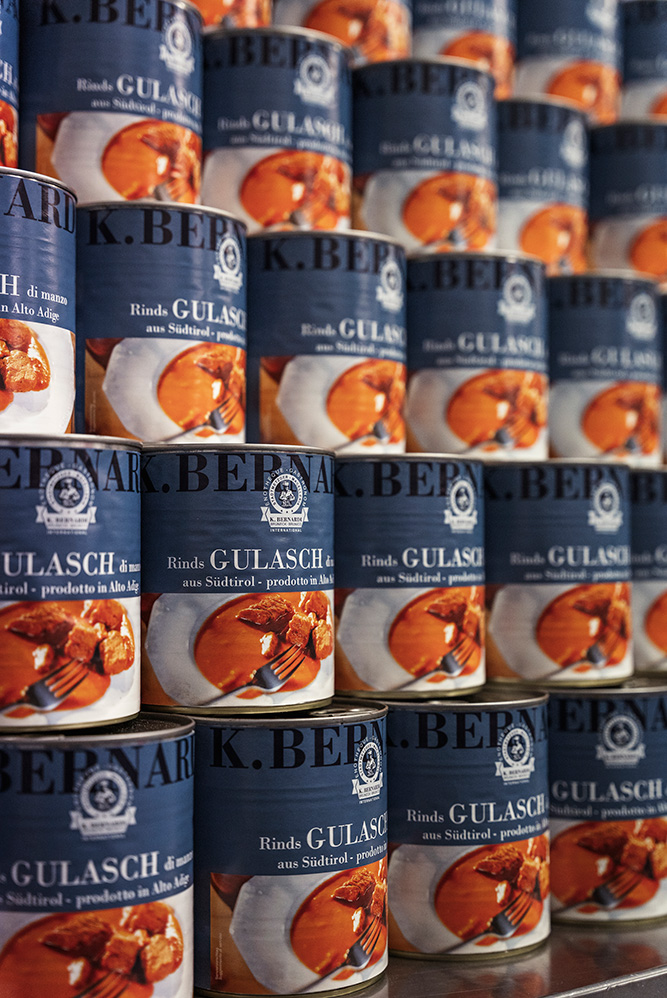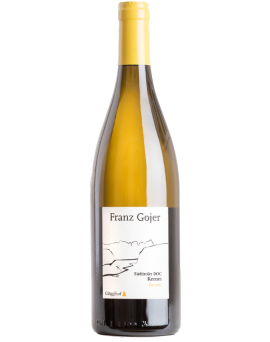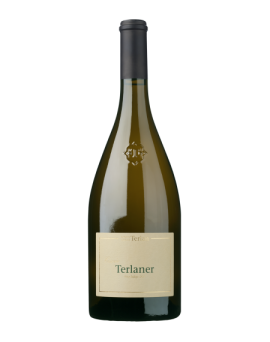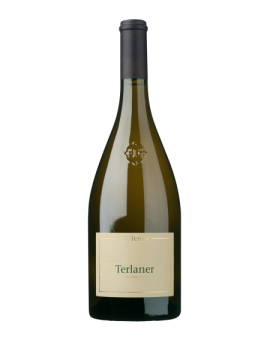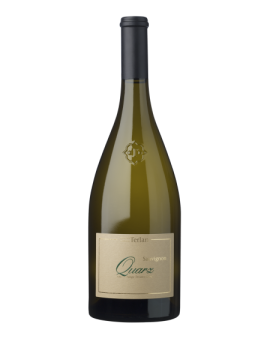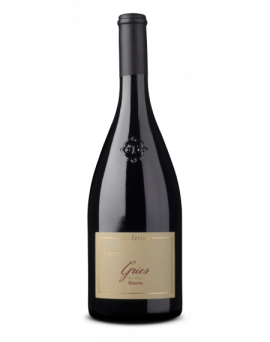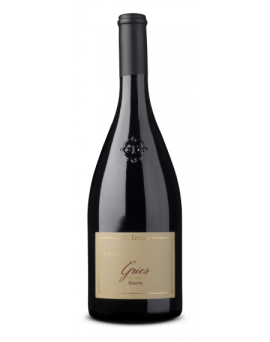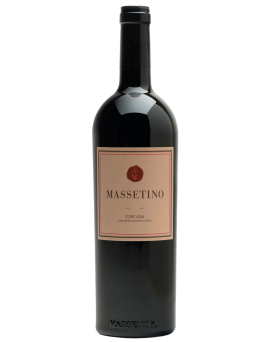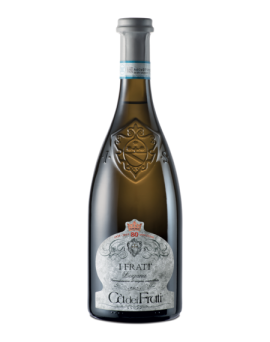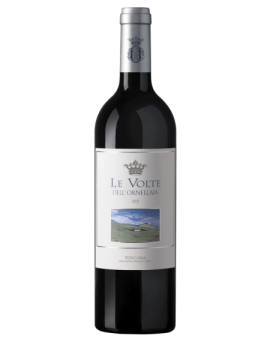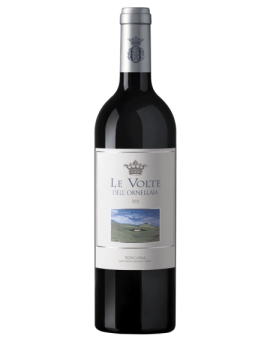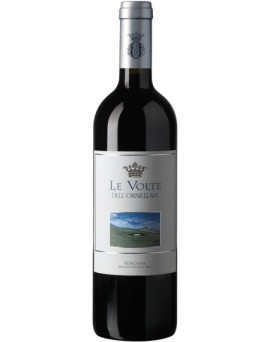Basket
0
Active filters
Terlaner klassisch 2023 DOC...
Terlaner Cuvée<br /><br />'Our historic cuvée, which has been produced since the founding of the winery, presents itself as a very complex wine thanks to the composition of the three most traditional<br />Terlan white wine varieties: Pinot Blanc, Chardonnay and Sauvignon Blanc. Pinot Blanc, which forms the main part, provides freshness and a good acid structure,<br />Chardonnay flatters with softness and warmth while Sauvignon complements the cuvée with its fine aromatics.'<br />Rudi Kofler<br /><br />Region of Origin: South Tyrol - Italy<br />DOC area: South Tyrol Terlan<br />Variety: 60%Wißburgunder,30%Chardonnay,10%Sauvignon Blanc<br />Vintage: 2021<br />Yield: 63 hl/ha<br />Orientation: South - Southwest<br />Slope: 5 - 60<br />Altitude: 280 - 700 m<br /><br />Harvest and grape selection by hand; gentle pressing and clarification of the must by natural sedimentation of the lees; slow fermentation at controlled temperature in<br />stainless steel tanks; ageing and maturation for 6-7 months on the fine lees partly in stainless steel tanks (80%) and partly in large wooden barrels (20%).<br /><br />Alcohol content: 13,5 % vol.<br />Residual sugar: 1,1 g/l<br />Total acidity: 5,9 g/l<br />
Price
€19.80
Magnum Terlaner klassisch...
Terlaner Cuvée 2021<br /><br />'Our historic cuvée, which has been produced since the founding of the winery, presents itself as a very complex wine thanks to the composition of the three most traditional<br />Terlan white wine varieties: Pinot Blanc, Chardonnay and Sauvignon Blanc. Pinot Blanc, which forms the main part, provides freshness and a good acid structure,<br />Chardonnay flatters with softness and warmth while Sauvignon complements the cuvée with its fine aromatics.'<br />Rudi Kofler<br /><br />Region of Origin: South Tyrol - Italy<br />DOC area: South Tyrol Terlan<br />Variety: 60%Wißburgunder,30%Chardonnay,10%Sauvignon Blanc<br />Vintage: 2021<br />Yield: 63 hl/ha<br />Orientation: South - Southwest<br />Slope: 5 - 60<br />Altitude: 280 - 700 m<br /><br />Harvest and grape selection by hand; gentle pressing and clarification of the must by natural sedimentation of the lees; slow fermentation at controlled temperature in<br />stainless steel tanks; ageing and maturation for 6-7 months on the fine lees partly in stainless steel tanks (80%) and partly in large wooden barrels (20%).<br /><br />Alcohol content: 14 % vol.<br />Residual sugar: 1,2 g/l<br />Total acidity: 6.3 g/l<br />
Price
€39.00
Magnum Sauvignon 2022 Quarz...
<br />'Our Sauvignon selection, which has been given a truly descriptive name, is as filigree as the fine quartz flecks in the volcanic porphyry rock of Terlan. Characteristic of the<br />quartz are its fine texture and depth as well as a salty reverberation, which have in the meantime brought this noble white wine international renown.'<br />Rudi Kofler<br />Wine<br /><br />Region of Origin: South Tyrol - Italy<br />DOC area: South Tyrol Terlan<br />Variety: 100% Sauvignon Blanc<br />Vintage: 2018<br />Orientation: South - Southwest<br />Slope: 10 - 40<br />Altitude: 300 - 550 m<br /><br />Vinification<br />Harvest and grape selection by hand; gentle whole bunch pressing and clarification of the must by natural sedimentation of the lees; slow fermentation at controlled<br />temperature and maturation for 9 months on the fine lees partly in large wooden barrels (50%) and partly in stainless steel tanks (50%); assemblage three months before<br />bottling.<br /><br />Technical data<br />Alcohol content: 14,0 % vol.<br />Residual sugar: 2,7 g/l<br />Total acidity: 6,8 g/l<br /><br />Recommended with food<br />An exciting accompaniment to oysters, salmon tartare or cruditè of shellfish; also to green apple risotto with cross-roasted brook trout fillet, steamed langoustines or roast<br />lamb in a herb crust with braised asparagus; mature goat's cheese.<br /><br />Character<br />Colour: Sparkling yellow-green<br />Nose: Enticingly exotic with a multi-layered fruit of mango, papaya, lime and red grapefruit but also herbal aromas reminiscent of lemongrass, lemon balm, mint and green<br />tea, this Sauvignon presents itself in the glass. In addition, it also reveals mineral flint notes combined with a hint of gooseberries.<br />Taste: An extremely interesting interplay is experienced on the palate, where the juicy fruit aromas combine with the delicate minerality to create a remarkable harmonious<br />fullness and a powerful and long finish.<br />
Price
€121.50
Magnum Lagrein 2021 Gries...
Gries Riserva<br /><br />'The alluvial soils in the Gries district of Bolzano are ideally suited to the autochthonous red wine variety Lagrein, which was first mentioned in writing as early as 1379. Our<br />Lagrein Gries impresses with its fruity berry aromas, but also noble spicy notes and its juicy, balanced body.'<br />Rudi Kofler<br /><br />Wine:<br />Region of Origin: South Tyrol - Italy<br />DOC Region: South Tyrol<br />Variety: 100 % Lagrein<br />Vintage: 2018<br />Yield: 56hl/ha<br />Orientation: South - Southwest<br />Slope: 0 - 5<br />Altitude: 250 m<br /><br />Vinification:<br />Harvest and grape selection by hand; destemming of the grapes followed by slow maceration at controlled temperature and gentle maceration in stainless steel tanks;<br />malolactic fermentation and ageing for 12 months partly in large wooden barrels (50%) partly in barriques (50%). For the maturation in the barrique barrels, one third new<br />wooden barrels are used. Assemblage three months before bottling.<br /><br />Technical data:<br />Alcohol content: 14,0 % vol.<br />Residual sugar: 1,4 g/l<br />Total acidity: 4,9 g/l<br />Serving temperature: 16 - 18 °C<br />Food pairing: In combination with roast chamois with root vegetables or veal cheeks braised in Lagrein with root vegetables.<br /><br />Character:<br />Colour: intense ruby to garnet red with a subtle violet hue.<br />Aroma: The bouquet reveals earthy-mineral notes that are beautifully combined with fruity aromas, with the scent of sour cherries and plum jam and bitter chocolate standing<br />out in particular.<br />Taste: These spicy yet velvety fruity notes also create tension on the palate, where this Lagrein Riserva presents itself with a multi-layered fullness and extreme complexity.<br />
Price
€61.40
Magnum Lagrein 2020 Gries...
Gries Riserva<br /><br />'The alluvial soils in the Gries district of Bolzano are ideally suited to the autochthonous red wine variety Lagrein, which was first mentioned in writing as early as 1379. Our<br />Lagrein Gries impresses with its fruity berry aromas, but also noble spicy notes and its juicy, balanced body.'<br />Rudi Kofler<br /><br />Wine:<br />Region of Origin: South Tyrol - Italy<br />DOC Region: South Tyrol<br />Variety: 100 % Lagrein<br />Vintage: 2018<br />Yield: 56hl/ha<br />Orientation: South - Southwest<br />Slope: 0 - 5<br />Altitude: 250 m<br /><br />Vinification:<br />Harvest and grape selection by hand; destemming of the grapes followed by slow maceration at controlled temperature and gentle maceration in stainless steel tanks;<br />malolactic fermentation and ageing for 12 months partly in large wooden barrels (50%) partly in barriques (50%). For the maturation in the barrique barrels, one third new<br />wooden barrels are used. Assemblage three months before bottling.<br /><br />Technical data:<br />Alcohol content: 13,5 % vol.<br />Residual sugar: 1,7 g/l<br />Total acidity: 5,0 g/l<br />Serving temperature: 16 - 18 °C<br />Food pairing: In combination with roast chamois with root vegetables or veal cheeks braised in Lagrein with root vegetables.<br /><br />Character:<br />Colour: intense ruby to garnet red with a subtle violet hue.<br />Aroma: The bouquet reveals earthy-mineral notes that are beautifully combined with fruity aromas, with the scent of sour cherries and plum jam and bitter chocolate standing<br />out in particular.<br />Taste: These spicy yet velvety fruity notes also create tension on the palate, where this Lagrein Riserva presents itself with a multi-layered fullness and extreme complexity.<br />
Price
€58.80
Sessantanni Primitivo di...
PRIMITIVO DI MANDURIA DOP<br />Sessantanni<br />Typology: Red<br />Grape variety: Primitivo<br />Denomination: Primitivo di Manduria DOP<br />Cultivation: Trees at least sixty years old<br />Planting density: 5,000 vines per hectare<br />Production area: Valle del Sessantanni, about 40 hectares between San Marzano and Sava (TA). The thermal values characterise a rather warm environment with very low<br />annual rainfall and very high temperature variations, which has a positive effect on the quality of the grapes. This is the classic growing area for Primitivo di Manduria PDO.<br />Soil: Red residual soil with a fine texture, calcareous substrate and sparse rock outcrops. The famous red hue of these soils is due to the high content of iron oxides.<br />Harvest: Mid-September<br />Vinification: Hand-picking of slightly overripe grapes; destemming and maceration, maceration at 8°C for 24-48 hours before fermentation. Thermally controlled maceration<br />and alcoholic fermentation with selected yeasts for about 10 days at 24-26°C. Final bottling with soft presses.<br />Maturation: Malolactic fermentation in stainless steel tanks followed by 12 months in French and American oak barriques.<br />Organoleptic characteristics: Very deep and elegant ruby red colour; rich and complex bouquet, fruity with notes of plums, cherry jam with a slight spiciness and hints of<br />tobacco. A wine of great body, soft and rich in noble tannins, with a finish that offers notes of cocoa, coffee and vanilla.<br />Pairings: Strong first courses, red meat and game.<br />Serve at: 18°C<br />
Price
€28.00
Le Volte 2022 IGT Toscana...
LE VOLTE DELL'ORNELLAIA 2022<br />TOSCANA IGT ROSSO<br />Instantly enjoyable, versatile and playful, Le Volte dell'Ornellaia is all about conviviality. This bright red wine opens the door to the world of Ornellaia and simply shares the<br />passion for quality that is experienced every day on our estate and with every sip.<br />TASTING NOTES<br />51% Cabernet Sauvignon, 44% Merlot, 5% Petit Verdot Alc. : 13 % vol.<br />Displaying a deep purple red, Le Volte dell'Ornellaia 2022 shows ripe frity aromas such as cherries and blackberries, in addition to black pepperiness. The palate is<br />generous with considerable body at first, followed by smooth and enduring tannins. Upbeat freshness and pleasurable fruity aromas make up the finish.<br /><br />THE 2022 G ROWING SEASON<br />The 2022 vintage in Bolgheri was distinguished by a typical winter with temperatures nearing the seasonal average, followed by a start of spring that was equally cool and<br />dry. These conditions caused the vines to bud later than usual. From May onwards, a lengthy dry spell - lasting for about 75 days - persisted in the area, seriously<br />challenging plant growth. The vines suffered from notable water stress during the growth, flowering and veraison periods, which resulted in a low-yield vintage. Fortunately,<br />after these complications, the rainfall caused by classic summer storms freed up the energies, reactivating the physiology of the vines that could resume the ripening of the<br />grapes. The rainfall cleared up during a month of September that proved perfect for the accumulation of sugar, aromas and tannins, mostly due to the cool night-time<br />temperatures. The harvest took place in superb conditions that enabled us to choose the perfect date for each vineyard and varietal. The red grape harvest started with<br />Merlot on 25 August before continuing through September ith Cabernet Sauvignon and ending on 10 October.<br /><br />VINIFICATION AND AGEING<br />The different varietals were fermented separately in small steel tanks to maintain their characteristics. The alcoholic<br />fermentation was followed by malolactic fermentation, again in steel tanks. The wine was then aged for 10 months,<br />partly in barriques used previously for Ornellaia and partly in concrete tanks, to obtain the perfect balance between<br />tannic structure and the expression of fresh fruit.<br />
Price
€24.00

